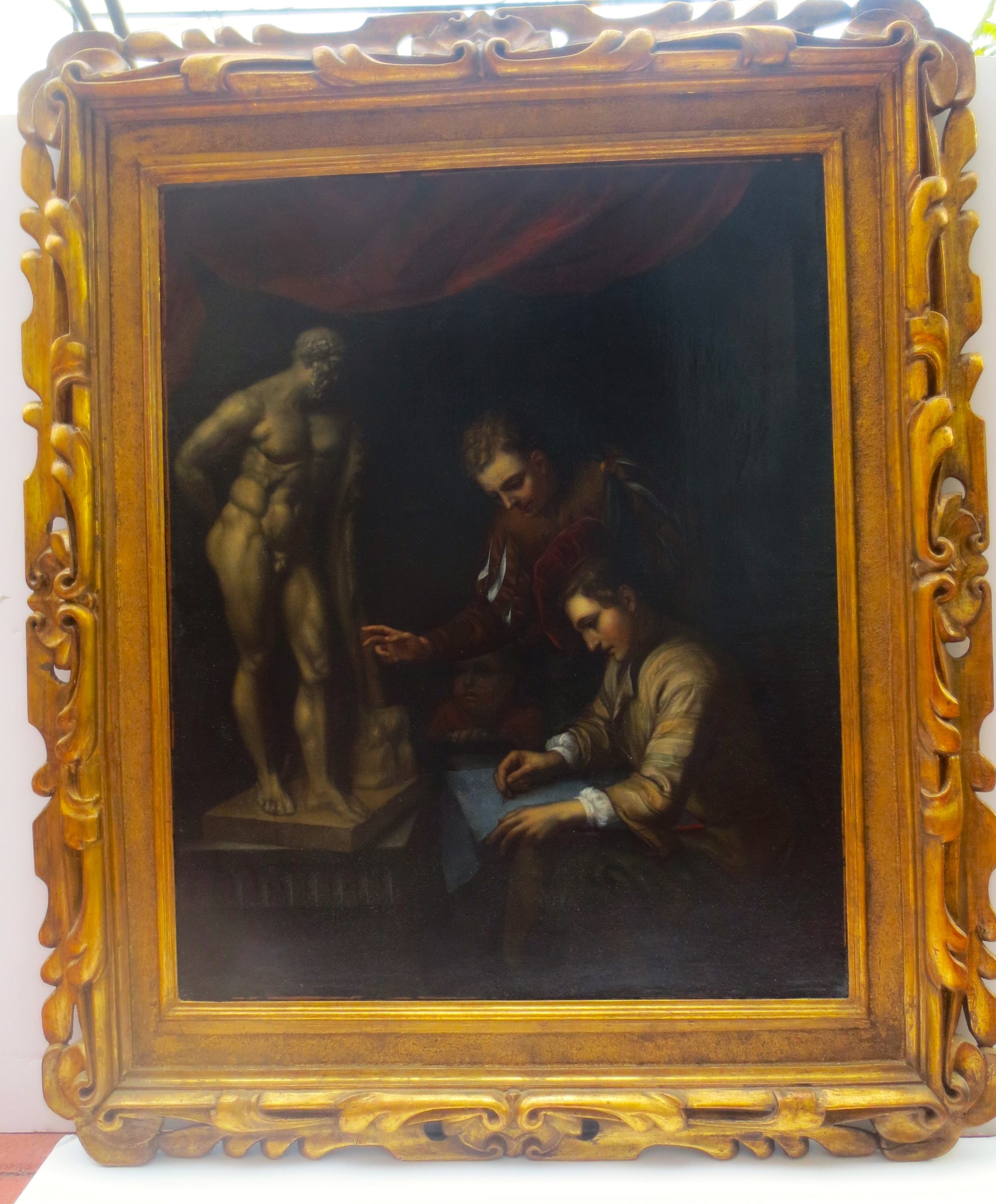Grimou was a successfully independent artist working primarily for the educated bourgeois elite in Paris, providing respectably sober portraits, whimsically costumed beauties, and a number of paintings ‘dans le gout de Rembrandt’ which specialized category earned him the sobriquet of ‘French Rembrandt.’ The small monograph on the artist published in a limited edition by Cyrille Gabillot in Paris,1911, is still the basic source for biographic data with an early albeit not fully complete listing of Grimou’s work.
Gabillot further devoted some attention to Grimou’s custom of both painting and actually wearing costumes associated with van Dyck, Watteau, the Spanish master and particularly Rembrandt, a fair number of whose paintings, real and purported, as well as etchings, were accessible influences among Grimou’s circle of collectors and connoisseurs. The reception of Grimou’s version of Rembrandt’s art was based as much on costume as on subject, technique, or style, reflecting and perhaps inspiring some of the more outlandish Rembrandt anecdotes found in eighteenth century art literature and in the Bohemian image of the self-willed, self-styled artistic character in the nineteenth century as announced by dress and coiffure as much as actual achievement. Cf. on Grimou in this capacity, George Levitine, “The Eighteenth Century Rediscovery of Alexis Grimou and the Emergence of the Proto-Bohemian Image of the French Artist,” Eighteenth Century Studies, Vol. 2, No. 1, Autumn,1968, pp. 58-76; some of this material was recapitulated and expanded in Levitine’s The Dawn of Bohemianism in 1978; it’s a pity that this aspect of the nineteenth century’s received image of Rembrandt was not noted in later studies of Rembrandt’s reception and reputation as a determinate in both connoisseurship and forgery.
The present painting is a particularly good example of Grimou’s original creations as a particularly meaningful instance of Grimou’s homage to Rembrandt’s art as understood in the Paris of Louis XIV: the view of artistic transmission from master to scholar as a branch from older images of early academies of art. Here, Grimou has used the archaizing costume – split sleeve of the master’s coat and the large beret worn by his pupil, to recall the artist portraits of Raphael, Rembrandt and their noble efforts at mastering and transmitting the visual exempla of a Humanist culture. Here, Grimou’s drawing lesson is after the antique, training both in the skill of disegno and the inspiration of classical norms, and even better, it shows transmission from the generation of the teacher to that of an acolyte and the emergent interest of a child. It is a full-blown avatar of a pictorial trope often explored in the wider Rembrandt orbit from the young Gerard Dou to Godfried Schalcken, Wallerant Vaillant and Michael Sweerts, and here brought into the next century. (For the forms and evolution of this genre, cf. Jeffrey M. Muller et al, Children of Mercury: The Education of Artists in the Sixteenth and Seventeenth Century, Providence,1984; for the humanist implication of the art lesson as an element of paidea cf. Jan Emmens, “A Seventeenth Century Theory of Art: Nature and Practice,” Delta,12,1969-70, pp. 30-39.

